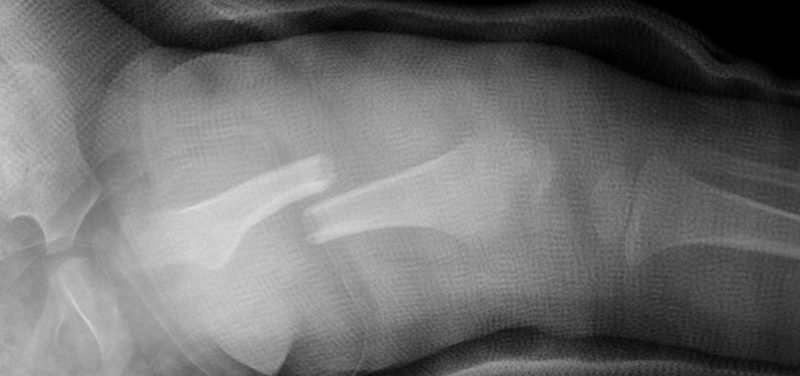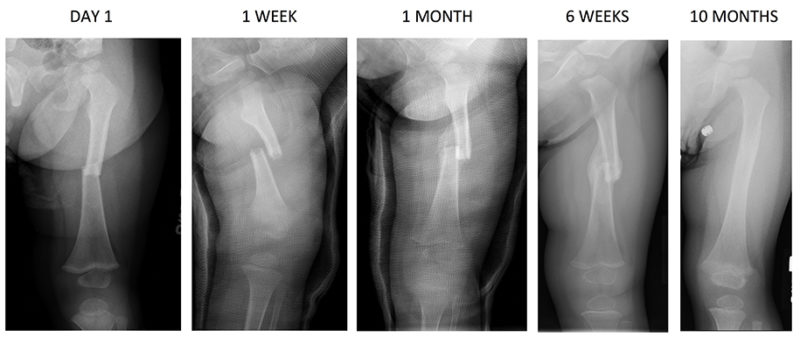

Kerplunk.
Crack.
Waa…Waah!
Broken bones, or fractures, are common in kids. Most fractures heal very well if held in the correct position and protected. So, how do our bodies do that?
Immediately after a fracture occurs, the body protects the injured bone by forming a blood clot which temporary plugs the bone gap. These changes alert our immune system to send inflammatory cells to the injured tissue, which stimulates the healing process.
After 1-2 weeks, the body starts to lay the foundation for bone repair. New blood vessels run through the blood clot or hematoma—think of them as the roads around a construction site. Multiple types of bone-building cells are also scattered around the fracture site—think of these as the carpenters, plumbers, and electricians.
Now, it’s time to make new bone. Some cells (fibroblasts and chondroblasts) make a framework of tissue in which other cells (osteoblasts) deposit new bone. New bone starts to grow on both sides of the fracture line and progressively grows together forming a callus which closes the fracture. This usually takes 1-4 months.
Unfortunately, this callus is not strong enough to withstand the repetitive stress we place on our bodies. Remodeling of the callus takes place over a period of time, restoring the normal bone structure. Depending upon the type of fracture, this remodeling process can take up to a year.
Below, there are several images of a displaced fracture through the femur. The bone breaks and moves, and the two pieces are not lined up straight. The blood clot surrounding the new fracture (Day 1 and 1 week) is not well seen. See how new bone forms around the fracture (1 month and 6 weeks) and over time is remodeled back into an almost normal appearance (10 months).

Contributed by Dr. Austin Dillard and edited by Janet Adams, (ADV TECH-ULT).
